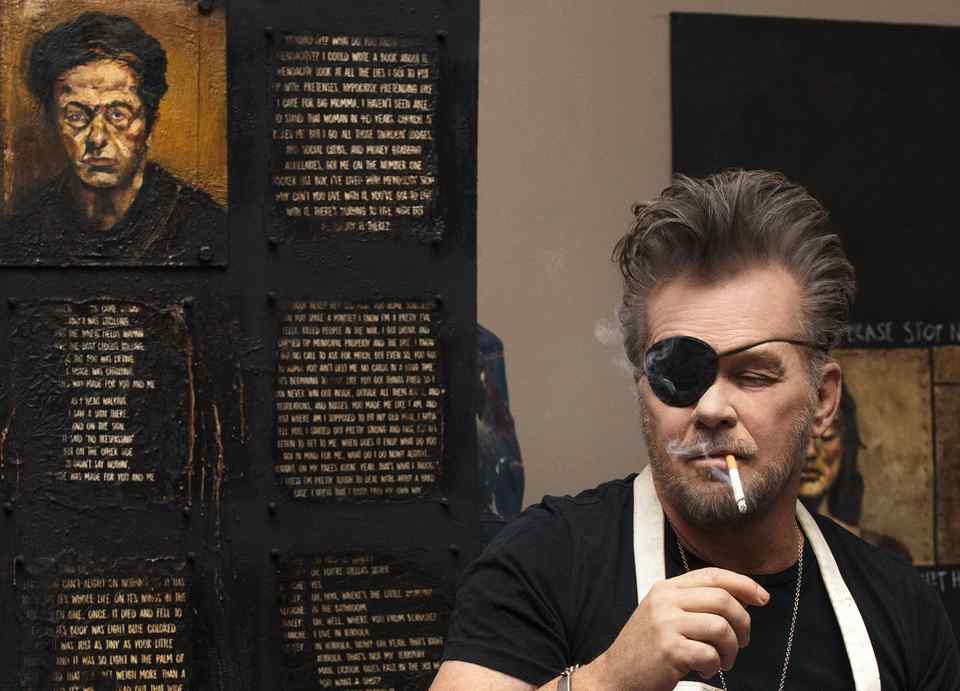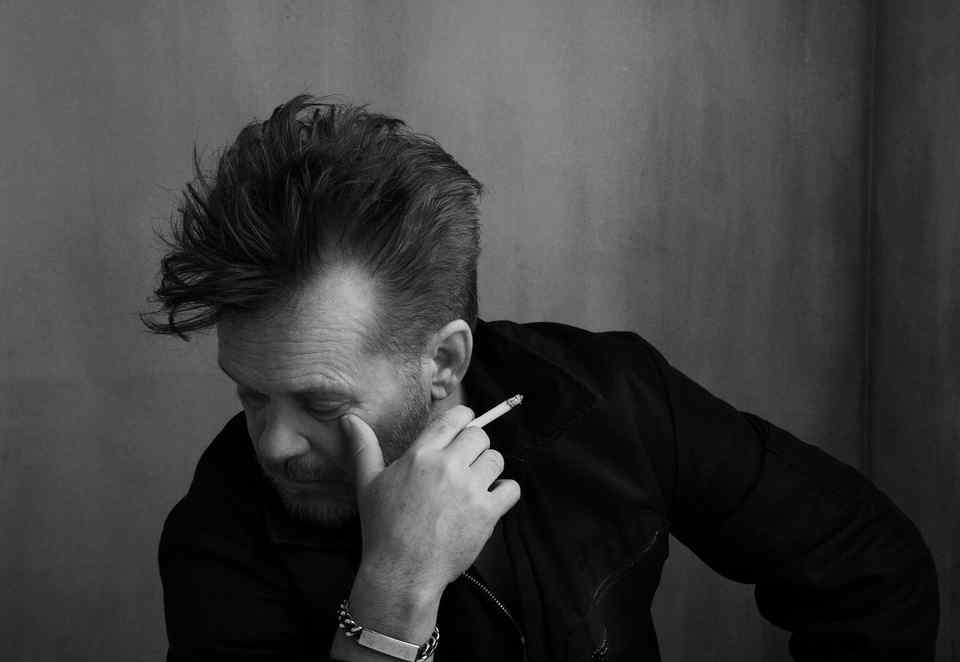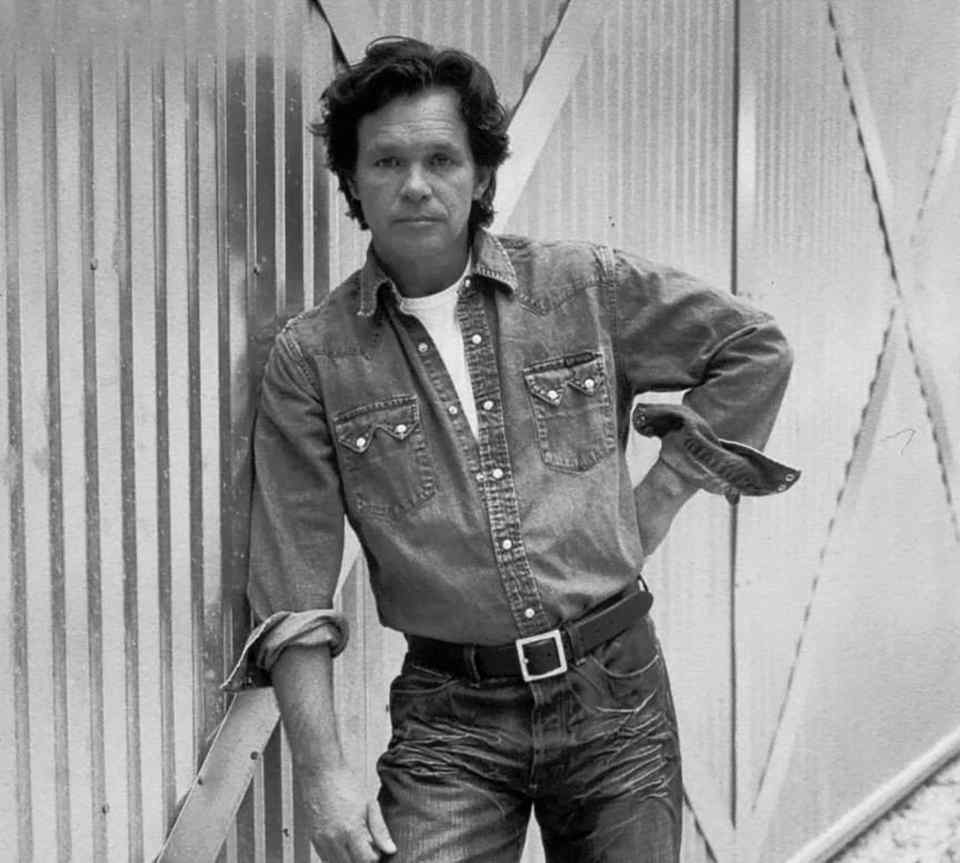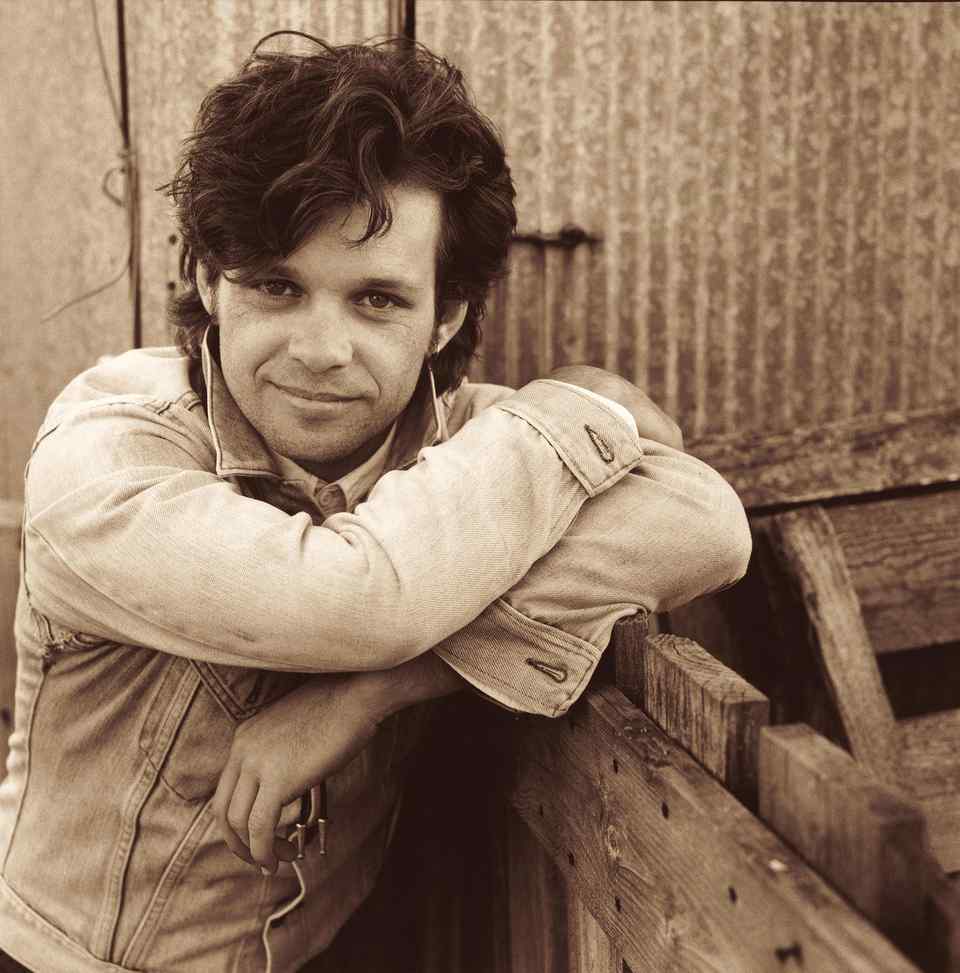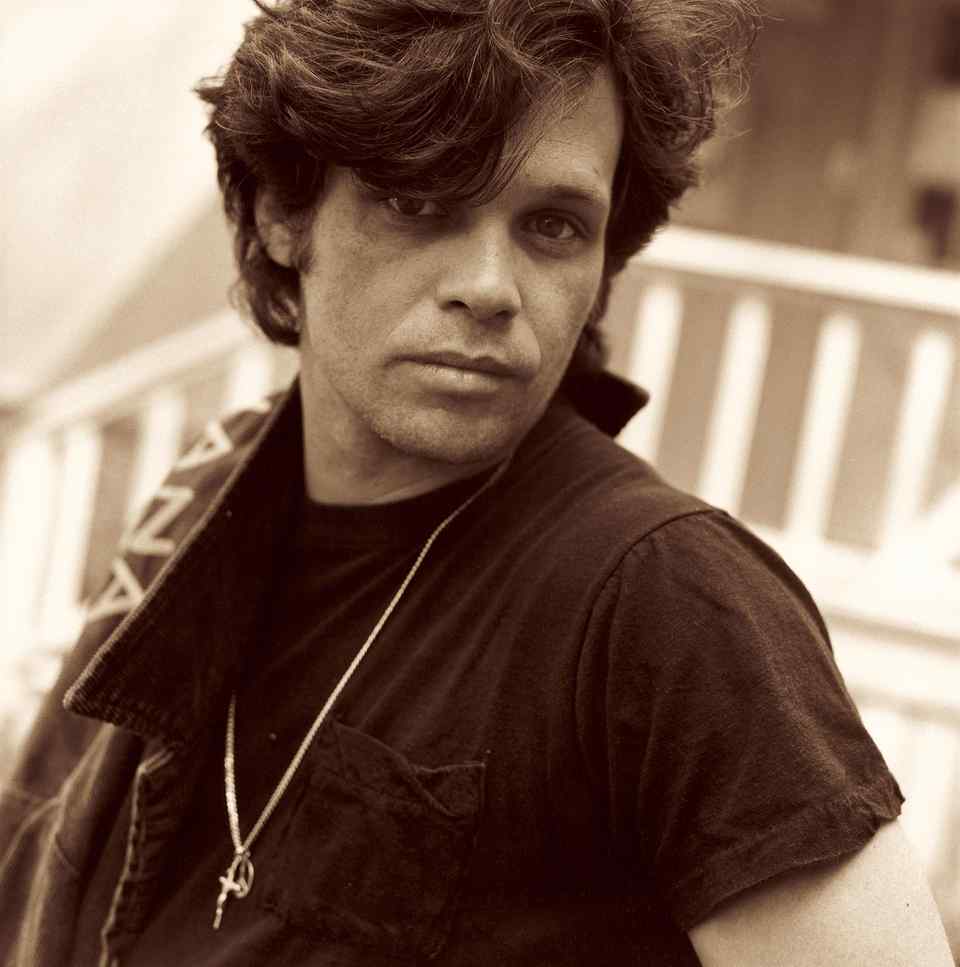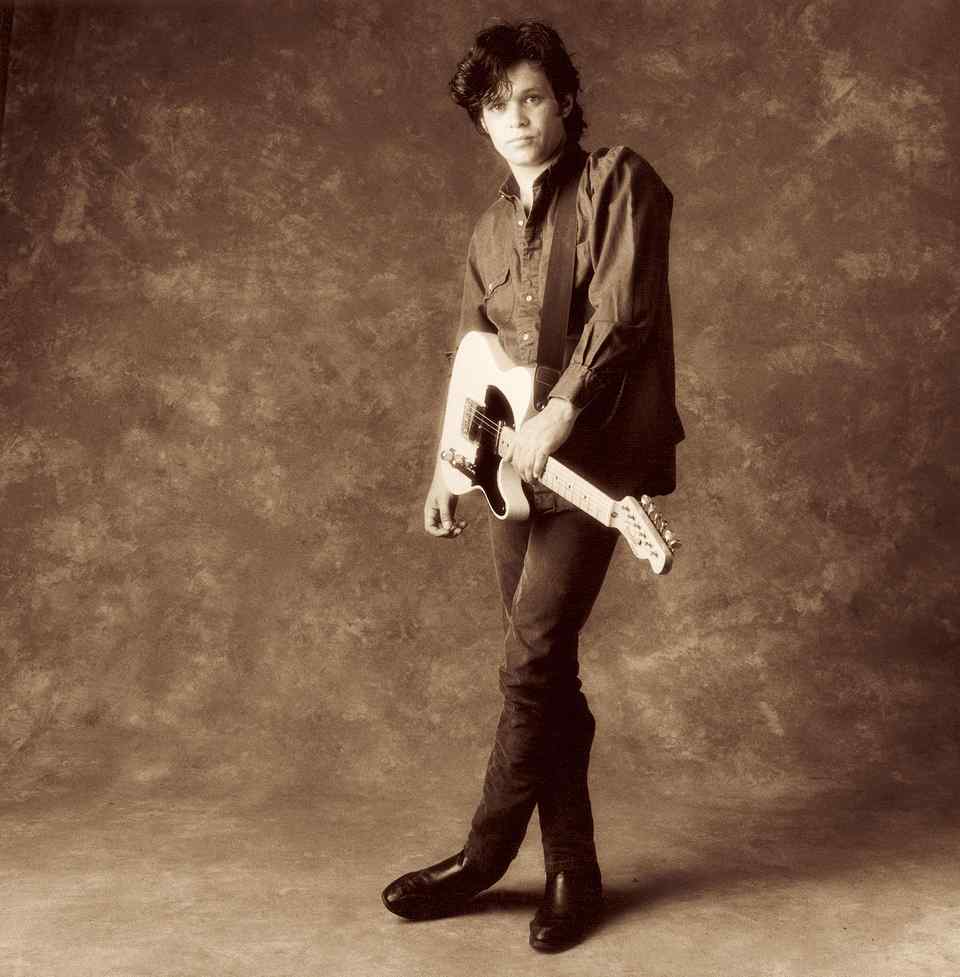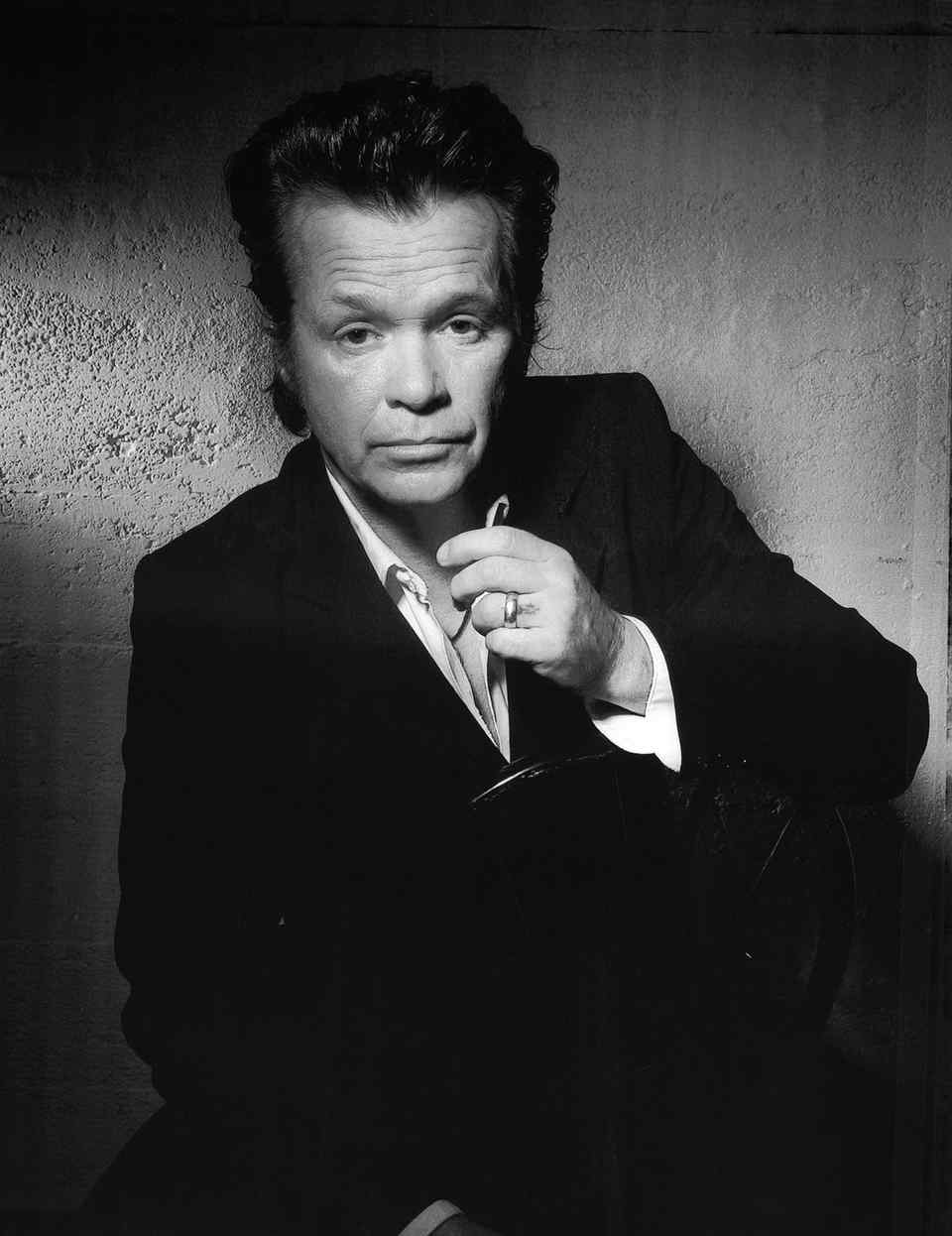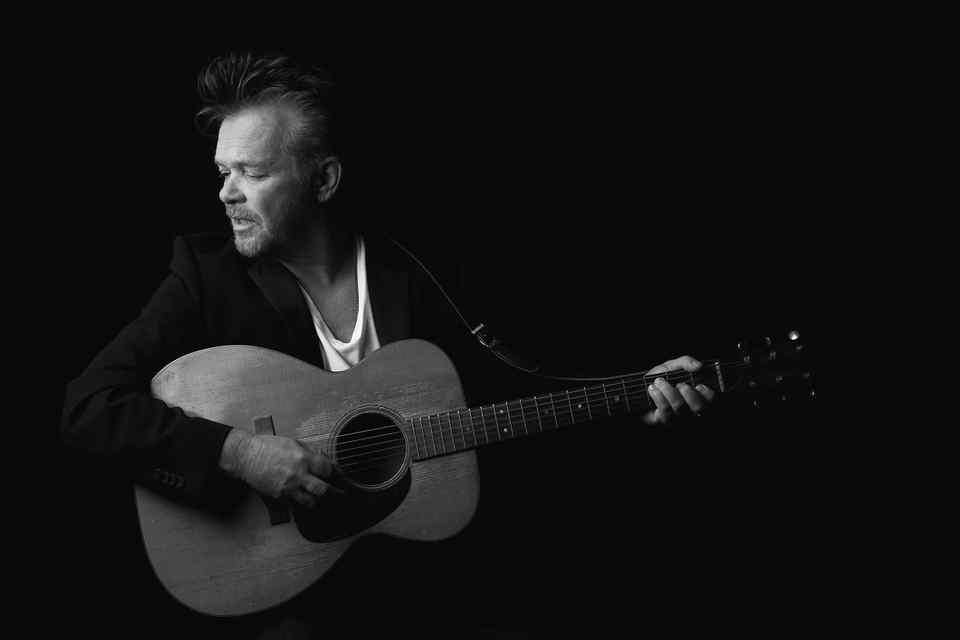Hilton Head Monthly Magazine: John Mellencamp’s New Testament
A few weeks ago, John Mellencamp wandered through a large and shiny mall in
Indianapolis in a futile, climate-controlled and probably Cinnabon-smelling hunt
for the record store.
This was, of course, a terrible idea, in part because you can imagine what happens when John Mellencamp wanders unannounced through a mall in Indianapolis, but also because he’d have had about as much luck finding a reliable VCR repairman or some MySpace gear; who knows the last time the mall had a record store. So he abandoned the search and did the only logical thing he could — went over to the Apple store. “The place was packed,” Mellencamp said. “Packed. People swarming in line, the way the record store was when we were kids.”
That was, needless to say, some time ago; these days when you accidentally stumble across a record store it feels weird, like an abandoned mining town or an undervisited museum. It looks passed over and it feels old-fashioned, but that makes sense, says Mellencamp, because so is rock ‘n’ roll.
“It’s done. It’s over. We killed it,” he says, pausing for effect between each little eulogy. “There’s nothing that’s going to revive it, or give us that extra little goose, like punk or grunge did. We ruined it. We outgrew it. So I’m kind of excited to see what’s next.”
It's worth noting here that Mellencamp, who was inducted into the Rock and Roll Hall of Fame in 2008, has crafted a pretty decent legacy for himself in the very field he’s assigning a time of death to. But, he says, that was a previous lifetime, one that no longer applies. “I made a record a long time ago — (what's) the name of that record? — oh, the ‘Uh Huh’ record,” he says, before discussing the shocking volume of dollars and time involved in making a hit album in the ‘80s. The “ ‘Uh Huh’ record,” incidentally, is the one with “Pink Houses” and “Authority Song” and was a smash in pretty much all commonly accepted definitions of the word. But it’s now a pause, a title that takes a moment to grasp again, a stone in his pass-way.
If you’re familiar with the radio and/or his greatest hits, you might find Mellencamp’s songs harder now, colder and meaner. They’re no longer powered by his commercially recognizable brand of scrappy Midwestern bang and defiance, but by brittle acoustic guitars, starkness and empty space. And because they’re weightier, and because Mellencamp has been famous for 40 years, and because he is a self-described “old guy” who takes shots from his teenage son about carrying an AARP card — “Like by looking at him you wouldn’t be able to tell he’s old?” Mellencamp quotes his son, chuckling — he has to find audiences in new ways, ones that don’t involve retail or radio or appealing to teens in ‘60s-vintage ice-cream shops.
“When we were on tour last year, (Bob) Dylan said to me, ‘The first records I made, the first ten records, I didn’t think we would ever sell them — they were just a reason to go on tour.’ That’s what these are now. They’re calling cards,” Mellencamp said. “The number of people interested in buying these records — not just by me but by all of us — is dwindling.” Luckily, Mellencamp has an idea for what to do now that rock ‘n’ roll is dead: Return to what it was like before it was born.
The first thing to go was the big, nice home studio equipment. Mellencamp’s new disc, “No Better Than This,” was recorded in gruff, sandy-sounding mono. It was captured +with one ribbon mic from the ’40s on a 55-year-old Ampex tape recorder (Mellencamp had three on hand, in case one of them overheated, or broke down or blew up). And and his band — including longtime violinist Miriam Sturm, guitarist Andy York and bassist David Roe, who played with lateera Johnny Cash — played into that one mic, recording to that one tape.
“If you listen to what they call AAA radio today, it’s all the same sounds,” Mellencamp said. “It’s different guys singing. But it’s the same drum sound, the same guitar sound. The further we got away from original, the worse it got. Technology gentrifi ed everybody.”
The second thing to go was Indiana. Mellencamp has recorded most of his records at his own Belmont Studio in southern Indiana, but after you knock out 20-some albums, it starts to feel like always going back to the same house. So Mellencamp — and T-Bone Burnett, the Grammy-winning and extremely tall producer behind the surprise hit “O Brother Where Art Thou” soundtrack and the Robert Plant/Alison Krauss collaboration “Raising Sand” — decided to make “No Better” a metaphorically satisfying road trip through rock history. Parts of it were recorded in Room 414 at the Gunter Hotel in San Antonio, the space where legendary bluesman Robert Johnson, he of the apocryphal devil-at-thecrossroads legend, laid down tracks like “Terraplane Blues” in the 1930s. Parts were recorded at Sun Studio in Memphis, where Sam Phillips captained sessions by Elvis and Jerry Lee Lewis.
But the third location is the most unusual: Savannah's First Baptist Church, across from Franklin Square. Not many Midwestern rockers had knocked on the church’s door with a 55-yearold tape recorder before, but Mellencamp said his hosts were not only receptive to his approach — “I have a wife that is very charming,” he demurred — but highly gracious hosts.
“They knew who I was,” he said. “But you could not find a more accommodating, kinder, helpful bunch of people. And it was as easy as walking through the doors to show up to pray.”
It was in First Baptist that Mellencamp, Burnett and York first got to work, birthing the rough skeletons of the record there in the pulpit. They would lay down more than a dozen songs a day, tracks like the rollicking, boom-chicka-boom title track and the father-son fight-club narrative “Easter Eve,” learning songs on the fly and going back for second takes only sporadically. “I’ve recorded albums fast,” Mellencamp said, “But I never recorded 13 or 14 songs in two days, particularly with musicians who had never heard the songs before.” Now and again they’d take breaks in Franklin Square, to get some fresh humid air and wander around the Spanish moss. “I don’t mean to insult anybody’s town,” Mellencamp said, “but Savannah is the most beautiful town in America.”
Most of the songs were then taken to Sun in Memphis, where the band fleshed them out with drums and bass. But a few tracks from the Savannah sessions do appear on the final record, including the gorgeous “Thinking About You,” a plaintive wisp of a love song to a girl gone for decades and the sly, John Prine-esque “Clumsy Ol’ World” that closes the record. But it was “No One Cares About Me,” a drifter’s lament in the beat-tothe-ground blues tradition that ended up shaping Mellencamp’s Savannah experience.
“I was singing (the song) — ‘I ain’t been baptized, I ain’t got no church, no friend in Jesus and what makes matters worse ...’ — and one of the women said, ‘Have you been baptized?’ I said no. And she said, ‘Well, we’ll baptize you,’ and I said, ‘OK.’ ”
The ceremony, Mellencamp found, was serious. “These people actually took off work and had a small congregation that came to witness. I was like, ‘Guys, I’m 58 years old, I can dress myself.’ But there were two guys who helped me put on the robe, two guys to escort me to the pulpit — and the same with Elaine. It was fantastic. If you’re not baptized, go down there and do it. They do it in an old-fashioned, believable way — and there for about two or three hours, I felt enlightened.”
Mellencamp spent the Fourth of July on Daufuskie — he has a house on Daufuskie, and one on Tybee Island — with his family, including his son, a boxer who’s on the cover of the record and who hates Daufuskie.
“He says, ‘Dad, I don’t want to go to Daufuskie. Daufuskie is a place for old people who don’t like people,’ ” Mellencamp says, chuckling. “I said, ‘Yeah, that’s why I like it!’ I was there last week, and I saw one car, and it was mine.” This is, of course, why people decamp to Daufuskie, and why it’s Mellencamp’s secret escape hatch; when he vanishes there his staff knows it’s not a time to call with problems. “Once you get on Daufuskie, you get on Daufuskie time. And time there is different than any time that I’ve ever experienced,” he said. "I talked to a gal on Daufuskie last week — of course, everybody talks to everybody because there are only 125 people on the damn island — and she told me she never leaves. She says, ‘I go to Hilton Head or Savannah once a month, maybe. But then I’m there 40 minutes and I come straight back.’ And I totally get it.”
Mellencamp sees Daufuskie like Walden or the outback or the island on “Lost.” “(You're) not on somebody else’s time, not on the boss’ time, but on your time. You get up when you want, eat when you want, walk to the ocean when you want. A watch is of no use to you on Daufuskie. Only the sun matters. It’s gonna come up and it’s gonna go down. The rest of the time, it doesn’t matter what time it is. And to me, after being in the music business for 40 years, that’s such a relief.”
The road to “No Better Than This,” started in 2003 with “Trouble No More,” a set of blues and folk covers. The record marked Mellencamp’s first move away from his brash, cigarettekissed rocker persona into that of a somber, hard folk singer.
That continued through 2007’s “Freedom’s Road” — though his disavowed donation of first single “Our Country” to Chevy for all those commercials gave the record an inaccurate sense of jingoistic simplicity — and 2008’s “Life, Death, Love and Freedom,” whose especially brittle, cold nature seemed to signify a rebuke of its predecessor. What's more, this summer Mellencamp released the sprawling box set “On The Rural Route 7609,” a four-disc collection populated not with iconic hits but often obscure, chronologically disordered outtakes and album cuts, along with acoustic demos, sketches and working versions of tracks like “Jack and Diane,” “Authority Song” and “Cherry Bomb.”
"T-Bone, in one of our early meetings, said, ‘John, you had the luxury or the misfortune of being a rock star. So we gotta get rid of that.’ And I said, ‘I agree. There's no place for that anymore. I look foolish trying to be a rock star at 58 years old,’ ” Mellencamp said. “My contemporaries, who continue to chase what they once were, will never achieve that goal.
“And he said, ‘What kind of music are you gonna make from here on out? Because you know you're gonna keep making records. You gonna try to re-create 'Hurts So Good?’ We have to make a change. We have to figure out how to grow old gracefully.”
MELLENCAMP'S HIDDEN GEMS
John Mellencamp has approximately 300 greatest-hits compilations, but here are some lesser-known treasures well worth looking up:
"Check It Out”: OK, it's not terribly obscure. But like his best tracks, this "Lonesome Jubilee" standout finds wealth and redemption in the everydayness of life. It's hope, mixed with pragmatism, mixed with melancholy and a slight touch of helplessness.
"Minutes To Memories ('Rough Harvest' Version)”: The original is a big '80s rocker, but this half-time, violin-driven version from a 1999 acoustic album is the real gem. (Also worth finding: the album's versions of “Key West Intermezzo” and “The Full Catastrophe.")
“When Jesus Left Birmingham”: 1993's "Human Wheels" has a refined, autumnal feel to it, but this opening track is its most revved-up moment. Plus, the outro features a cameo from one of the best lines from "Jack and Diane."
“A Brand New Song”: Probably to permanently scrub away the residue of “Our Country," Mellencamp’s '08 disc “Life, Death, Love and Freedom” is really, really, really dark. Really. But this swaying, set-closing gem leaves things on a slightly less despondent note.
This was, of course, a terrible idea, in part because you can imagine what happens when John Mellencamp wanders unannounced through a mall in Indianapolis, but also because he’d have had about as much luck finding a reliable VCR repairman or some MySpace gear; who knows the last time the mall had a record store. So he abandoned the search and did the only logical thing he could — went over to the Apple store. “The place was packed,” Mellencamp said. “Packed. People swarming in line, the way the record store was when we were kids.”
That was, needless to say, some time ago; these days when you accidentally stumble across a record store it feels weird, like an abandoned mining town or an undervisited museum. It looks passed over and it feels old-fashioned, but that makes sense, says Mellencamp, because so is rock ‘n’ roll.
“It’s done. It’s over. We killed it,” he says, pausing for effect between each little eulogy. “There’s nothing that’s going to revive it, or give us that extra little goose, like punk or grunge did. We ruined it. We outgrew it. So I’m kind of excited to see what’s next.”
It's worth noting here that Mellencamp, who was inducted into the Rock and Roll Hall of Fame in 2008, has crafted a pretty decent legacy for himself in the very field he’s assigning a time of death to. But, he says, that was a previous lifetime, one that no longer applies. “I made a record a long time ago — (what's) the name of that record? — oh, the ‘Uh Huh’ record,” he says, before discussing the shocking volume of dollars and time involved in making a hit album in the ‘80s. The “ ‘Uh Huh’ record,” incidentally, is the one with “Pink Houses” and “Authority Song” and was a smash in pretty much all commonly accepted definitions of the word. But it’s now a pause, a title that takes a moment to grasp again, a stone in his pass-way.
If you’re familiar with the radio and/or his greatest hits, you might find Mellencamp’s songs harder now, colder and meaner. They’re no longer powered by his commercially recognizable brand of scrappy Midwestern bang and defiance, but by brittle acoustic guitars, starkness and empty space. And because they’re weightier, and because Mellencamp has been famous for 40 years, and because he is a self-described “old guy” who takes shots from his teenage son about carrying an AARP card — “Like by looking at him you wouldn’t be able to tell he’s old?” Mellencamp quotes his son, chuckling — he has to find audiences in new ways, ones that don’t involve retail or radio or appealing to teens in ‘60s-vintage ice-cream shops.
“When we were on tour last year, (Bob) Dylan said to me, ‘The first records I made, the first ten records, I didn’t think we would ever sell them — they were just a reason to go on tour.’ That’s what these are now. They’re calling cards,” Mellencamp said. “The number of people interested in buying these records — not just by me but by all of us — is dwindling.” Luckily, Mellencamp has an idea for what to do now that rock ‘n’ roll is dead: Return to what it was like before it was born.
The first thing to go was the big, nice home studio equipment. Mellencamp’s new disc, “No Better Than This,” was recorded in gruff, sandy-sounding mono. It was captured +with one ribbon mic from the ’40s on a 55-year-old Ampex tape recorder (Mellencamp had three on hand, in case one of them overheated, or broke down or blew up). And and his band — including longtime violinist Miriam Sturm, guitarist Andy York and bassist David Roe, who played with lateera Johnny Cash — played into that one mic, recording to that one tape.
“If you listen to what they call AAA radio today, it’s all the same sounds,” Mellencamp said. “It’s different guys singing. But it’s the same drum sound, the same guitar sound. The further we got away from original, the worse it got. Technology gentrifi ed everybody.”
The second thing to go was Indiana. Mellencamp has recorded most of his records at his own Belmont Studio in southern Indiana, but after you knock out 20-some albums, it starts to feel like always going back to the same house. So Mellencamp — and T-Bone Burnett, the Grammy-winning and extremely tall producer behind the surprise hit “O Brother Where Art Thou” soundtrack and the Robert Plant/Alison Krauss collaboration “Raising Sand” — decided to make “No Better” a metaphorically satisfying road trip through rock history. Parts of it were recorded in Room 414 at the Gunter Hotel in San Antonio, the space where legendary bluesman Robert Johnson, he of the apocryphal devil-at-thecrossroads legend, laid down tracks like “Terraplane Blues” in the 1930s. Parts were recorded at Sun Studio in Memphis, where Sam Phillips captained sessions by Elvis and Jerry Lee Lewis.
But the third location is the most unusual: Savannah's First Baptist Church, across from Franklin Square. Not many Midwestern rockers had knocked on the church’s door with a 55-yearold tape recorder before, but Mellencamp said his hosts were not only receptive to his approach — “I have a wife that is very charming,” he demurred — but highly gracious hosts.
“They knew who I was,” he said. “But you could not find a more accommodating, kinder, helpful bunch of people. And it was as easy as walking through the doors to show up to pray.”
It was in First Baptist that Mellencamp, Burnett and York first got to work, birthing the rough skeletons of the record there in the pulpit. They would lay down more than a dozen songs a day, tracks like the rollicking, boom-chicka-boom title track and the father-son fight-club narrative “Easter Eve,” learning songs on the fly and going back for second takes only sporadically. “I’ve recorded albums fast,” Mellencamp said, “But I never recorded 13 or 14 songs in two days, particularly with musicians who had never heard the songs before.” Now and again they’d take breaks in Franklin Square, to get some fresh humid air and wander around the Spanish moss. “I don’t mean to insult anybody’s town,” Mellencamp said, “but Savannah is the most beautiful town in America.”
Most of the songs were then taken to Sun in Memphis, where the band fleshed them out with drums and bass. But a few tracks from the Savannah sessions do appear on the final record, including the gorgeous “Thinking About You,” a plaintive wisp of a love song to a girl gone for decades and the sly, John Prine-esque “Clumsy Ol’ World” that closes the record. But it was “No One Cares About Me,” a drifter’s lament in the beat-tothe-ground blues tradition that ended up shaping Mellencamp’s Savannah experience.
“I was singing (the song) — ‘I ain’t been baptized, I ain’t got no church, no friend in Jesus and what makes matters worse ...’ — and one of the women said, ‘Have you been baptized?’ I said no. And she said, ‘Well, we’ll baptize you,’ and I said, ‘OK.’ ”
The ceremony, Mellencamp found, was serious. “These people actually took off work and had a small congregation that came to witness. I was like, ‘Guys, I’m 58 years old, I can dress myself.’ But there were two guys who helped me put on the robe, two guys to escort me to the pulpit — and the same with Elaine. It was fantastic. If you’re not baptized, go down there and do it. They do it in an old-fashioned, believable way — and there for about two or three hours, I felt enlightened.”
Mellencamp spent the Fourth of July on Daufuskie — he has a house on Daufuskie, and one on Tybee Island — with his family, including his son, a boxer who’s on the cover of the record and who hates Daufuskie.
“He says, ‘Dad, I don’t want to go to Daufuskie. Daufuskie is a place for old people who don’t like people,’ ” Mellencamp says, chuckling. “I said, ‘Yeah, that’s why I like it!’ I was there last week, and I saw one car, and it was mine.” This is, of course, why people decamp to Daufuskie, and why it’s Mellencamp’s secret escape hatch; when he vanishes there his staff knows it’s not a time to call with problems. “Once you get on Daufuskie, you get on Daufuskie time. And time there is different than any time that I’ve ever experienced,” he said. "I talked to a gal on Daufuskie last week — of course, everybody talks to everybody because there are only 125 people on the damn island — and she told me she never leaves. She says, ‘I go to Hilton Head or Savannah once a month, maybe. But then I’m there 40 minutes and I come straight back.’ And I totally get it.”
Mellencamp sees Daufuskie like Walden or the outback or the island on “Lost.” “(You're) not on somebody else’s time, not on the boss’ time, but on your time. You get up when you want, eat when you want, walk to the ocean when you want. A watch is of no use to you on Daufuskie. Only the sun matters. It’s gonna come up and it’s gonna go down. The rest of the time, it doesn’t matter what time it is. And to me, after being in the music business for 40 years, that’s such a relief.”
The road to “No Better Than This,” started in 2003 with “Trouble No More,” a set of blues and folk covers. The record marked Mellencamp’s first move away from his brash, cigarettekissed rocker persona into that of a somber, hard folk singer.
That continued through 2007’s “Freedom’s Road” — though his disavowed donation of first single “Our Country” to Chevy for all those commercials gave the record an inaccurate sense of jingoistic simplicity — and 2008’s “Life, Death, Love and Freedom,” whose especially brittle, cold nature seemed to signify a rebuke of its predecessor. What's more, this summer Mellencamp released the sprawling box set “On The Rural Route 7609,” a four-disc collection populated not with iconic hits but often obscure, chronologically disordered outtakes and album cuts, along with acoustic demos, sketches and working versions of tracks like “Jack and Diane,” “Authority Song” and “Cherry Bomb.”
"T-Bone, in one of our early meetings, said, ‘John, you had the luxury or the misfortune of being a rock star. So we gotta get rid of that.’ And I said, ‘I agree. There's no place for that anymore. I look foolish trying to be a rock star at 58 years old,’ ” Mellencamp said. “My contemporaries, who continue to chase what they once were, will never achieve that goal.
“And he said, ‘What kind of music are you gonna make from here on out? Because you know you're gonna keep making records. You gonna try to re-create 'Hurts So Good?’ We have to make a change. We have to figure out how to grow old gracefully.”
MELLENCAMP'S HIDDEN GEMS
John Mellencamp has approximately 300 greatest-hits compilations, but here are some lesser-known treasures well worth looking up:
"Check It Out”: OK, it's not terribly obscure. But like his best tracks, this "Lonesome Jubilee" standout finds wealth and redemption in the everydayness of life. It's hope, mixed with pragmatism, mixed with melancholy and a slight touch of helplessness.
"Minutes To Memories ('Rough Harvest' Version)”: The original is a big '80s rocker, but this half-time, violin-driven version from a 1999 acoustic album is the real gem. (Also worth finding: the album's versions of “Key West Intermezzo” and “The Full Catastrophe.")
“When Jesus Left Birmingham”: 1993's "Human Wheels" has a refined, autumnal feel to it, but this opening track is its most revved-up moment. Plus, the outro features a cameo from one of the best lines from "Jack and Diane."
“A Brand New Song”: Probably to permanently scrub away the residue of “Our Country," Mellencamp’s '08 disc “Life, Death, Love and Freedom” is really, really, really dark. Really. But this swaying, set-closing gem leaves things on a slightly less despondent note.

